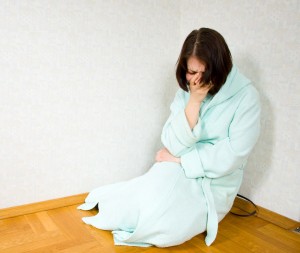Spousal Abuse
 Spousal abuse, also referred to as domestic violence or intimate partner violence, is a behavioral cycle that involves emotional, physical, or sexual violence inflicted on an individual in a domestic context, such as cohabitation or marriage. Anyone can be a victim, regardless of race, gender, age, sexual orientation, or economic background. According to the United States Department of Justice, 1.3 million women and 835,000 men are victims of physical violence by an intimate partner annually.
Spousal abuse, also referred to as domestic violence or intimate partner violence, is a behavioral cycle that involves emotional, physical, or sexual violence inflicted on an individual in a domestic context, such as cohabitation or marriage. Anyone can be a victim, regardless of race, gender, age, sexual orientation, or economic background. According to the United States Department of Justice, 1.3 million women and 835,000 men are victims of physical violence by an intimate partner annually.
The consequences of spousal abuse extend beyond perpetrators and victims, affecting their immediate family, friends, and communities. Children witness spousal abuse, neighbors may be pulled into the violence, the abused may withdraw from family and friends, and so on. Spousal abuse goes beyond the walls of any one person’s home.
What Is Spousal Abuse?
Spousal abuse, a more narrowly defined version of domestic violence, entails a variety of mechanisms employed by one partner to control or manipulate the other partner. One partner may be the sole abuser, or in some cases both partners actively abuse each other in one or more ways. Spousal abuse can be physical, sexual, or psychological in nature.
Spousal Abuse Statistics You Should Know
The National Center on Domestic Violence, Trauma, and Mental Health reports that girls who experienced childhood abuse or exposure to violence were approximately six times more likely to experience physical or sexual abuse in adulthood. In the United States, approximately 10% of adult men and 29% of adult women have experienced serious stalking, rape, and/or physical abuse from an intimate partner at one point in their lives. The financial costs related to domestic violence are estimated to be in excess of $8.3 billion annually, with most of that money going toward medical and mental health care.
Psychological Effects of Spousal Abuse
Violent relationships usually undergo a cycle that can be difficult to recognize, but has clear psychological effects on the abused partner. It often begins with tension, arguments, threats, and anger. These behaviors and emotions escalate in the relationship and are usually followed by a violent incident that can be physical, emotional, or sexual. Afterward, the abuser will often make attempts to apologize, make excuses, or try to reconcile the relationship. There may be a period of calm, and then the cycle repeats itself. This cycle of abuse often worsens over time and can lead the victim to experience:
- Intense fear
- Low self-worth
- Anxiety
- Depression
- Withdrawal from family, friends, and relationships outside the home
- Posttraumatic stress (PTSD)
- Suicidal thoughts and tendencies
- Emotional numbing or detachment
- Inability to sleep well
How Therapy Can Help Spousal Abuse Survivors
The isolation and psychological effects of spousal abuse can be overcome by seeking out the help a qualified mental health professional such as a counselor or therapist. Counseling sessions offer victims a safe and confidential atmosphere to express their feelings, emotions, and experiences.
Seeking the help of a trauma expert can help victims cope with any residual anxiety, and therapists can also help by sharing ways of relieving the stress and pain that may be ongoing. By seeking help, survivors of spousal abuse can learn mechanisms of controlling emotions like anger and fear and begin healing the psychological wounds left by the abuse. Group counseling is another viable option, as connecting with fellow survivors can help in mitigating feelings of isolation.
If you or a loved one is a victim of spousal abuse, please seek the help of a qualified mental health professional. The longer abuse persists, the more it can harm the victim physically and psychologically. There is support available nationally and in your community to help you end the cycle of violence and move past it. Here are resources and tips for those in trouble:
- If you are hurt or in immediate danger, please call 911 and do what you can to get in a safer situation.
- Contact the National Domestic Violence Hotline. It can be reached at 800-799-SAFE (7233) or 800-787-3224 (TDD). The national hotline can guide spousal abuse survivors to local shelters in their communities and/or vital services.
- For local resources, visit this section of WomensHealth.gov to find support in your state.
- If you are searching online for services or help, clear your browsing history. Monitoring Internet search history is a common tactic of abusers to maintain control over their victims. Firefox, Internet Explorer, and Google Chrome all have options to clear browsing history located in the upper-right corner below the button to close the window.
References:
- Domestic violence: statistics & facts. (n.d.). Safe Horizon. Retrieved October 23, 2014, from http://www.safehorizon.org/page/domestic-violence-statistics–facts-52.html
- Intimate partner violence and lifetime trauma. (2011). National Center on Domestic Violence, Trauma & Mental Health. Retrieved October 24, 2014, from http://nationalcenterdvtraumamh.org/wp-content/uploads/2012/01/Warshaw-IPV-and-Lifetime-Trauma.pdf
- Intimate partner violence: consequences. (2013). Centers for Disease Control and Prevention. Retrieved October 21, 2014, from http://www.cdc.gov/violenceprevention/intimatepartnerviolence/consequences.html
- National Coalition Against Domestic Violence. (n.d.). Domestic violence facts. Retrieved from http://www.ncadv.org/files/DomesticViolenceFactSheet%28National%29.pdf
Last Updated: 08-26-2015